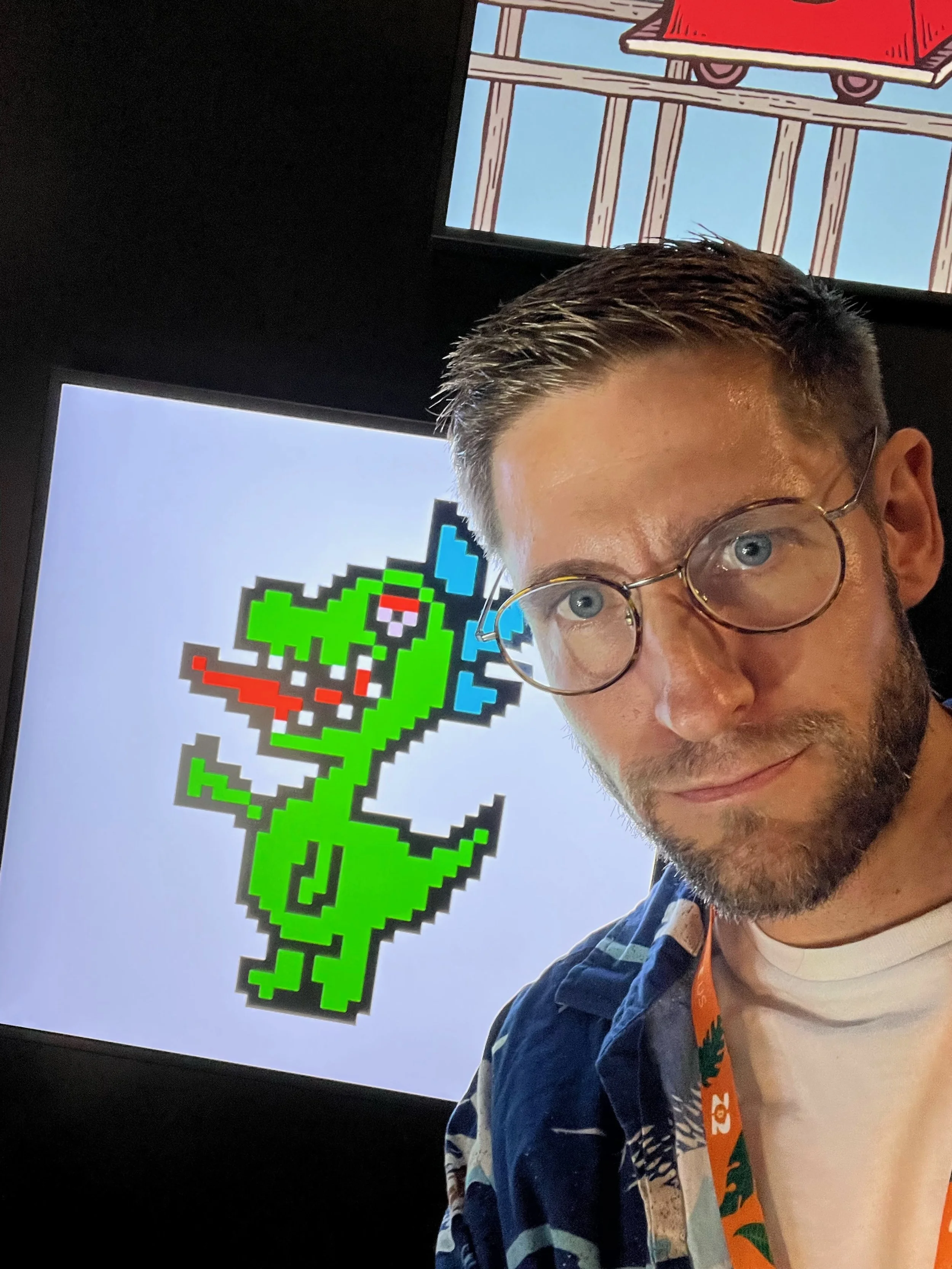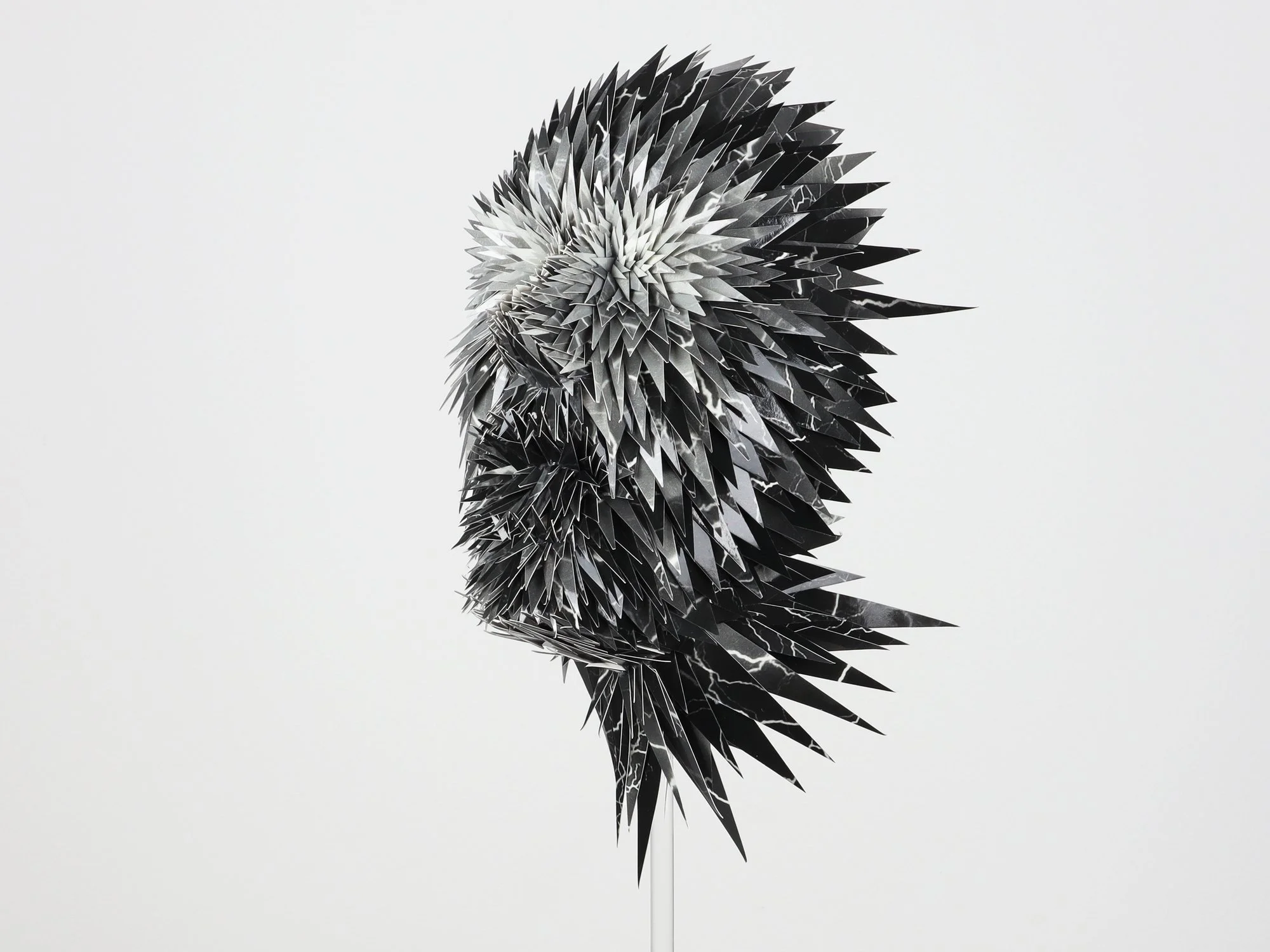10 Questions with Michał Milczarek
Michal Milczarek (1990) is a sound artist, guitarist, and composer living in Warsaw, Poland. He graduated from the University of Warsaw in the field of political science.
For the last ten years, Milczarek has been focused on his main project - MM3. The group was known for its modern jazz approach and released two long plays — "Squirrels and Butterflies" (2014) and "Ambient Works" (2016). "Squirrels" won the 2014 Jazz Phonographic Debut of the Year prize. These days MM3 is experimenting with new concepts of organic electronic music. The trio's latest release is a single, "Underwater" (2020).
In 2017 Milczarek started another band - NUDA. This avant-garde quartet released its debut album "NUDA" (2020), full of improvised music and minimalism aesthetics. The album was well-received by critics as one of the best Polish jazz recordings in 2020. From 2011 to 2020, Milczarek had a very intense concert activity, mainly with MM3. He has toured Germany, Scotland, China, Vietnam, Lithuania, Ukraine, and Poland.
After a few years of presence in the jazz-related industry, Michal Milczarek started a new chapter in his career based on experimental ambient solo projects. He released "nie.pokoje" (2017), "Next Station EP" (2020), "Sewing Machine EP" (collab with Szymon Białorucki, 2021), and several single compositions. His works deal with sound design, guitar loops deconstruction, field recordings, and improvisation. In 2021 he began his activity as part of the NFT movement.
He is currently working on multimedia concepts and audio-visual artworks connecting the language of music and social commitment. He received a scholarship from the Polish Ministry of Culture's "Culture on the Web" program (2020).
Michał Milczarek - Portrait
ARTIST STATEMENT
“I think everything is sound. But, on the other hand, sound is everything.
I am interested in the relationship between sound and our perception of sonic experiences. I try to treat listening both as a hobby and as a cognitive method. I believe that by listening carefully to our surroundings, we can gather a lot of information about the world around us and about ourselves.
I am sure that sound art should be seen as part of the world of contemporary art. Music doesn't have to be just entertainment value. Like visual arts, theater, or poetry, it can ask important questions and provoke reflection, and it can even be a vehicle for change.” - Michał Milczarek
INTERVIEW
Let's talk about yourself first. Why are you an artist, and how did you become one?
Why am I an artist? I think there are a couple of reasons. But the most significant thing for me is the power of creating. The creative process is an absolutely exciting feeling and phenomenon. To invent something, write something, paint something, or name something, in other words - to create something that doesn't exist yet. That's so cool!
And how did I become an artist? Well, answering this question is very difficult. It's quite a long and complicated story, rethinking about myself. I can tell you about one situation that is a good example of this process. I remember one day, during my studies (I studied political science), one of the professors said that he recognized two cognitive methods, scientific and artistic. Both of these methods are equally important and allow you to answer questions and understand the world. I thought, "Okay, screw playing chords and solos on guitar. It's not enough. I need to create art! I need to tell the world!". And that brought me closer to being an artist.
You are a sound artist, guitarist, and composer, and you are involved in several different projects. What is your favorite part of creating music?
There are two types of thinking about creating. The first one says: the main goal of creating is the artwork, the final effect. The second one says something opposite: the main goal of creating is creating for itself. I am in the second club. The creative process as individual work but also as group brainstorming is the most exciting part of the artistic playground. So, my favorite part of creating music is creating.
Despite being still young, you have already worked on many different projects. What do you think differentiates your approach from others?
My very good friend Mateusz Modrzejewski (great drummer and scientist) sometimes says it is worth trying to watch the world in high definition. I like this phrase, and I really try to always look at things in high definition. I think this is my approach when working on different projects. I don't think about music just as music. I don't think about visuals just as visuals. Simply put, they are diverse languages that are parts of something bigger. The most interesting things in contemporary art are created across disciplines and styles. Nowadays, it's perfectly visible in the NFT space.
In your statement, you touch on an important theme. You say, "Music doesn't have to be just entertainment value. Like visual arts, theater, or poetry, it can ask important questions, provoke reflection, and it can even be a vehicle for change". What messages do you want to convey with your music?
My practice is social engagement through sound, so the message is a significant part of it. I explore many areas in my artistic work, so there are many messages that I want to convey with music or other works. I am a member of a global community in the XXI century, and I want to tell about our reality. I want to ask questions.
We live in a crazy postmodern digital era. All I do is deal with it in my work. So the messages I convey with my music regard various problems of the present day. My general message is probably something like, "I'm here and now. Be with me".
What do you think is the role of art in addressing such relevant themes?
Asking questions is even more important than answering them. Actually, your question is also about conveying messages with art. And about corresponding with the present. And the best way to communicate with the present is by asking big questions about it. The greatest thinkers and artists did that. When you look at Jackson Pollock's paintings, you see the whole historical and artistic context of his ideas. When you look at Warhol's Coca-Cola, you don't see only bottles of Coca-Cola. You look at the whole sixties. When you listen to The Who, you know that their music is an excellent example of the British post-war generation. And even today - if you follow artists like Adam Disbrow or Beeple - you feel these are essential voices telling about our times and culture. All these artists share important messages by asking questions. That's the role of art.
Where do you draw your inspiration for your pieces? Do you have any musician or artist you particularly look up to when creating your music?
I'd rather not look up to musicians when creating music. Painting has been my inspiration for over a decade. I can't paint, but I try to think about composing music more like a painting than just composition. You know, sounds can be like dots on the canvas. If you think about them this way, music becomes more and more interesting. The connections between sound and vision are very inspiring for me, but this is probably a subject for another interview.
My most significant source of inspiration in the last few years has been cities. I'm a big fan of city aesthetics, the noise, chaos, and people. Big cities are spaces of change and I try to show it through sounds. I do it abstractly by composing music, but I also make a lot of field recordings that are an important artistic technique for me. They are the very direct source of city sound. I combine these two ways of creating, as you can hear on "Next Station EP", where guitar soundscapes meet London underground field recordings. Another example is the "Comfortable Noise" Spotify series, where Berlin field recordings are connected with guitar psychedelic loops.
How has your art evolved over the years? And what inspired you to experiment?
The evolution of my art is linked to my personal story. When I was 20, I thought I was a jazz guitarist. When I was 25, I thought I was a post-jazz/ambient guitarist. Then, when I turned 30, I thought about myself as a musician. Now I'm 32, and I feel comfortable with labels like sound artist or multimedia artist. Of course, I don't know what is true. Fortunately, I don't need to specify it.
My recent inspiration and artistic activity area is digital aesthetics. This is the essential background of my current experiments. By digital, I mean not only electronic music but also multimedia artworks, visual aesthetics, and the way of publishing and distributing art. From March 2021, I'm a member of the NFT Art Community. This experience is one of those that can be called a breakthrough.
The recent Covid pandemic has impacted the music world as much as the art world. How did you promote your work over the past couple of years with fewer chances to present your work in person through shows and concerts?
The music world has two main spaces of activity. The first one is albums or singles releases, and the second one is live shows. During the Covid pandemic, only the first area worked. Digital releases are a standard nowadays, and they are more popular than physical merch. So creating music, publishing it on Bandcamp or YouTube, and promoting it through social media channels were all known before lockdowns. That is what I have done for years, and that is what I did even more intensively from the beginning of Covid.
Compared to the pre-pandemic time, did you find any positive change in the approach that people have to your art now?
For the last two years, I have changed my approach to being an artist. After years of intense concert activity, now most of my work is composing music and creating multimedia works at home, and publishing it digitally. This is a new way of communicating with my fans and community. And I can say it changed the approach people have to my art. Most of my listeners don't expect pure guitar recordings or ambient releases. Instead, they expect something unexpected, and that's beautiful.
pixel//SELF_PORTRAIT//no_8 © Michał Milczarek
pixel//SELF_PORTRAIT//no_9 © Michał Milczarek
And lastly, what are your plans for the future?
As always, I have too many plans! First of all, I have quite a tight releases calendar. Just a few days ago, there was a premiere of my new album "Future: ON" (audio-play long-form inspired by Stanisław Lem's literature) on the Chinese digital market. Now we're working on publishing this album in the western media. In August, there will be a premiere of my experimental ambient long-play. It will be released by one of the greatest ambient labels, but I cannot share more details for now. Follow my newsletter and social media to be updated! At the end of this year or the beginning of 2023, I plan to release an album version of the "Comfortable Noise" series. All singles will be remastered and released on cassette, vinyl, and digitally. It's worth following me on Bandcamp to be up to date.
Secondly - I'm working on my sound installation concepts. I have two ideas to explore, so I hope something will be ready next year. I'm very interested in modern sound art, and I would like to be more present in this area.
And the third thing is NFT Art. I'm still working on fantastic NFT projects. Most of them are collaborations with great artists from different parts of the world. Adam Disbrow, Ana Caballero, and I are working on a poetry-music-visual piece available next week. I also work with the fantastic collage artist Michelle Thompson. We're creating a collection of audiovisual miniatures. There is definitely too much of everything!
















